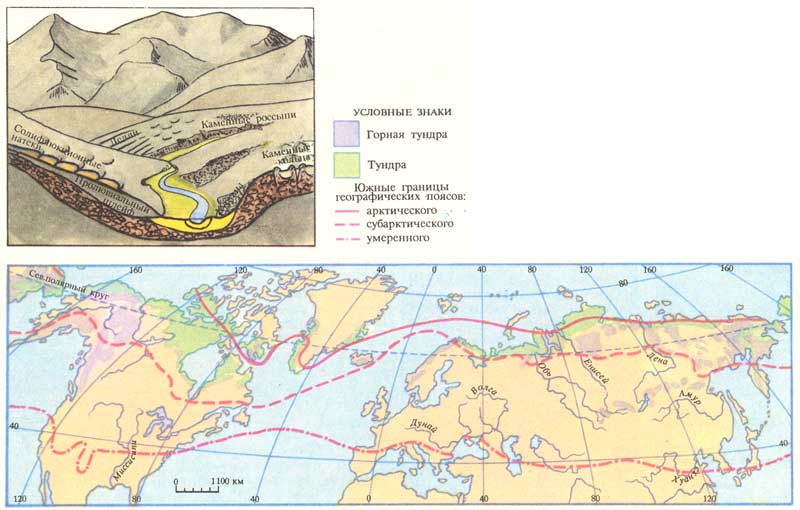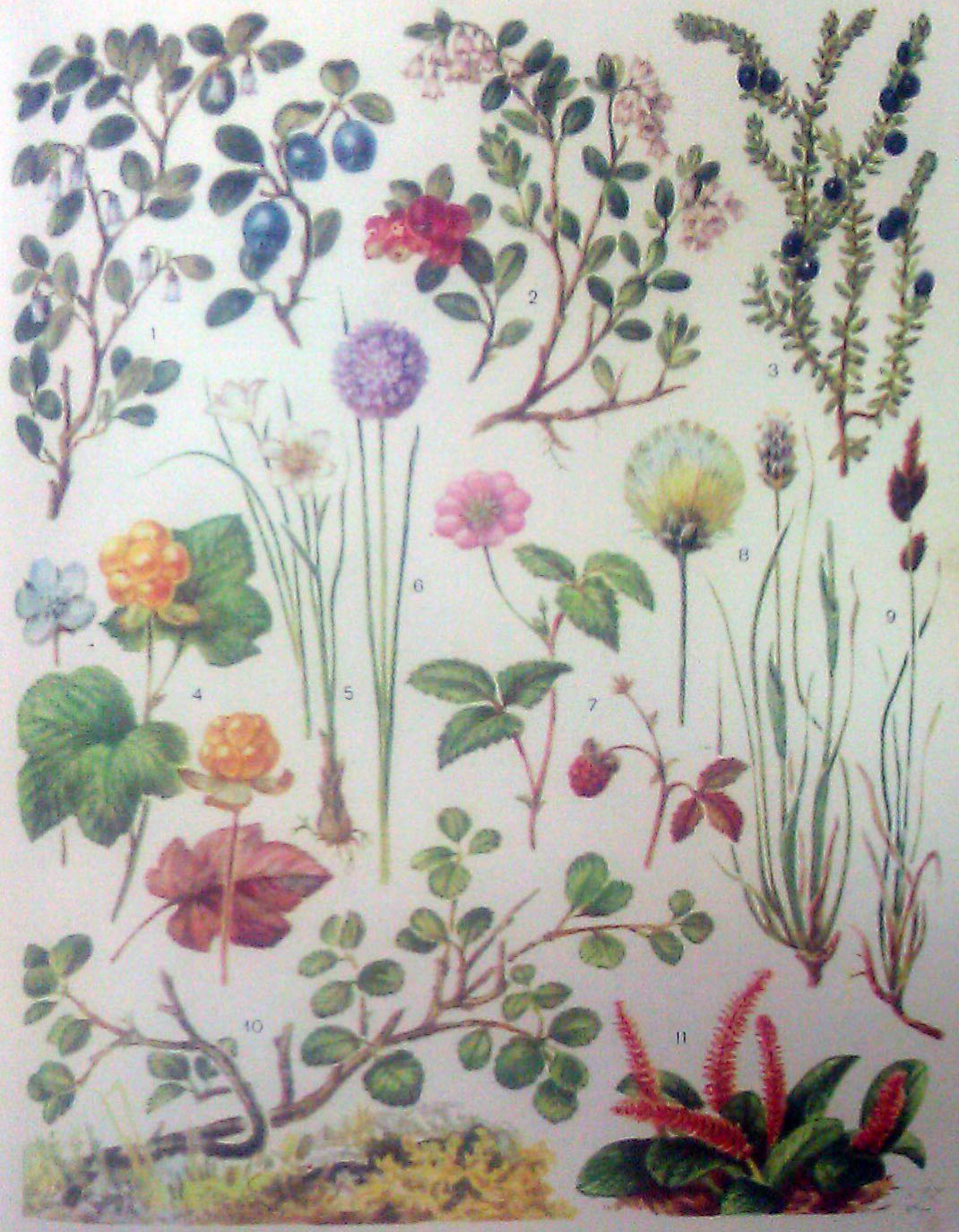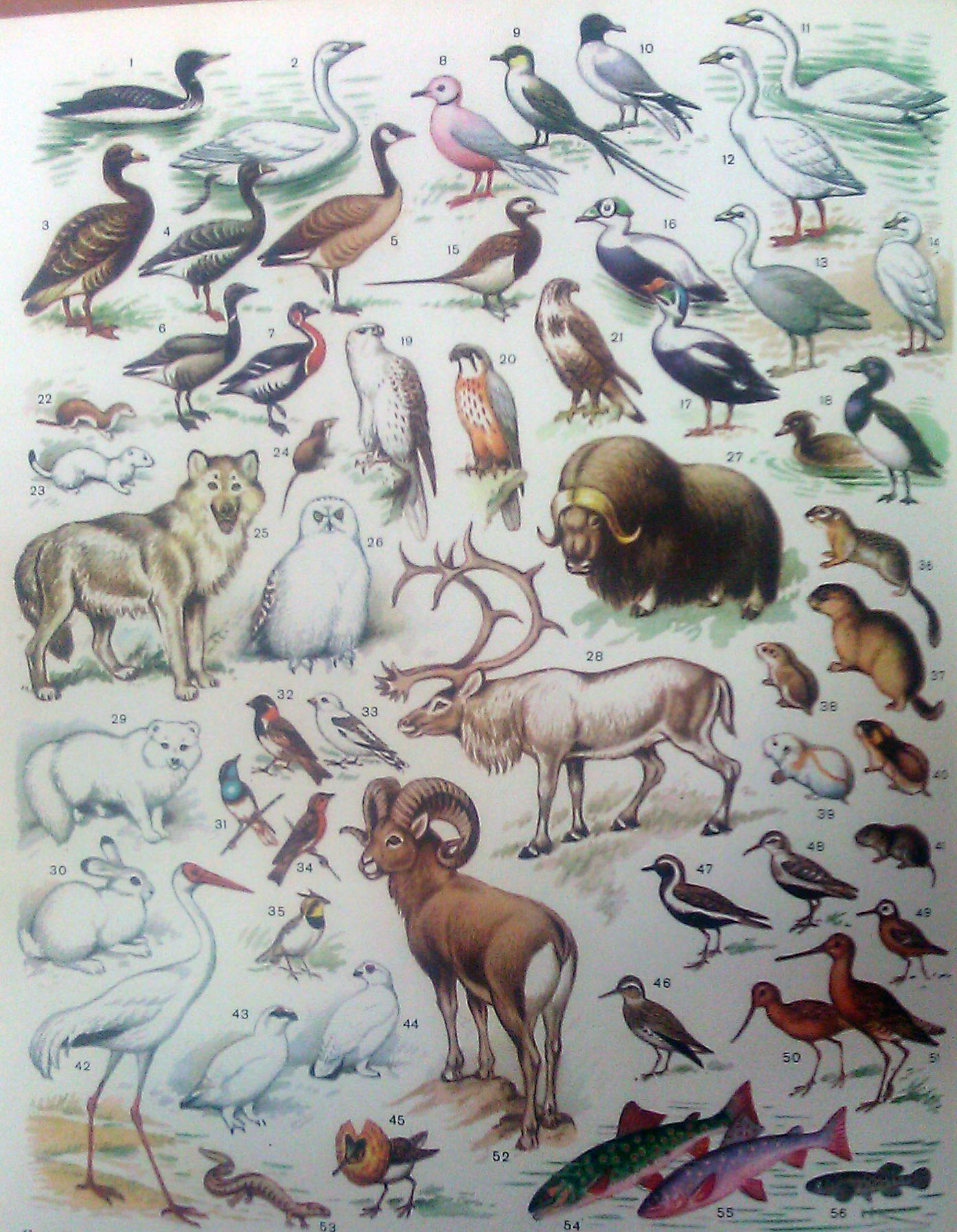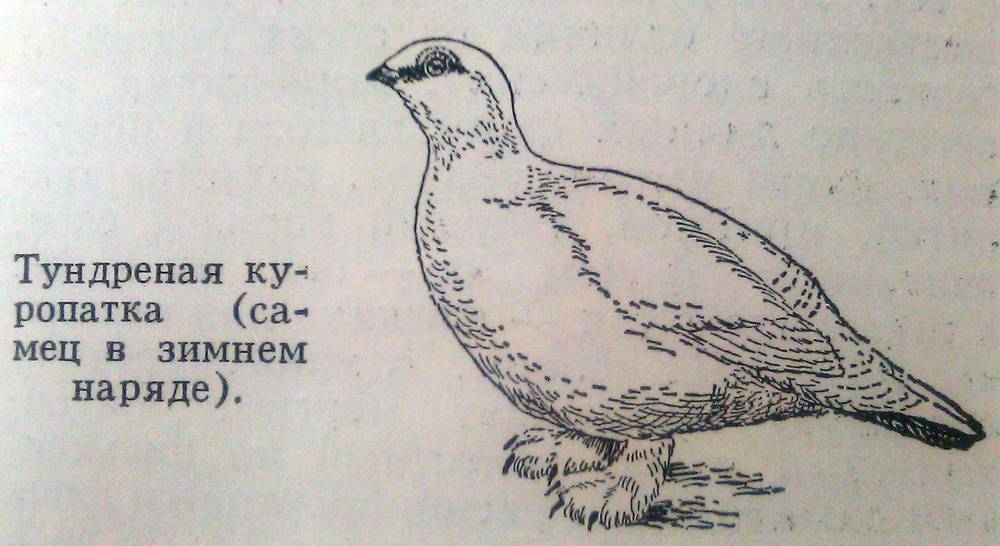The natural tundra zone is located mainly beyond the Arctic Circle and is bounded in the north by arctic (polar) deserts, and in the south by forests. It is located in the subarctic belt between 68 and 55 degrees north latitude. In those small territories, where cold air masses from the Arctic Ocean in summer are blocked by mountains - these are the valleys of the rivers Yana, Kolyma, Yukon - taiga rises into the subarctic. It is necessary to distinguish separately the mountain tundra, characterized by a change in nature with the height of the mountains.
The word "tundra" comes from the Finnish tunturi, which means "treeless, bare hill." In Russia, the tundra occupies the coast of the seas of the Arctic Ocean and adjacent territories. Its area is about 1/8 of the entire area of Russia. In Canada, the tundra natural zone owns a significant part of the northern territories, which are practically unpopulated. In the United States, tundra occupies most of the state of Alaska.
a brief description of
- The natural tundra zone occupies about 8-10% of the entire territory of Russia;
- The tundra has a very short summer with an average temperature in the warmest month, July, from +4 degrees in the north to +11 degrees in the south;
- Winter in the tundra is long and very harsh, accompanied by strong winds and blizzards;
- Cold winds blow throughout the year: in summer - from the Arctic Ocean, and in winter - from the chilled mainland of Eurasia;
- There is very little rainfall in the tundra zone - only 200-300 mm per year. However, the soils in the tundra are universally waterlogged due to impermeable permafrost at a shallow depth of the surface cover and weak evaporation due to low temperatures even with strong winds;
- The soils in the tundra are usually poorly fertile and heavily waterlogged.
Natural zone of Russia
As everyone knows from school lessons, the nature and climate on the territory of Russia has a clearly expressed zoning of processes and phenomena. This is due to the fact that the territory of the country has a great length from north to south, and it is mainly dominated by flat relief. Each natural zone is characterized by a certain ratio of heat and moisture. Natural areas are sometimes called landscape or geographic.
The tundra occupies an area adjacent to the coast of the Arctic Ocean and is the most severe inhabited natural zone in Russia. To the north of the natural tundra zone there are only arctic deserts, and to the south the forest zone begins.
On the plains of Russia the following are presented natural areas starting from the north:
- Arctic deserts;
- Tundra
- Forest tundra
- Forest-steppe
- Steppes
- Semi-desert
- Deserts
- Subtropics.
And in the mountainous regions of Russia, the altitudinal zonation is clearly expressed.
![]()
Natural zones of Russia on the map
The tundra is characterized by harsh climatic conditions, relatively little precipitation and the fact that its territory is located mainly behind polar circle... Let's list the facts about the tundra:
- The natural tundra zone is located north of the taiga zone;
- In the mountains of Scandinavia, the Urals, Siberia, Alaska and Northern Canada, mountain tundras are found;
- Tundra zones stretch in a strip 300-500 km wide along the northern coasts of Eurasia and North America;
- Winter in the tundra lasts 6-9 months a year;
- Frosts in the tundra sometimes reach minus 50 degrees Celsius;
- The polar night in the tundra lasts 60-80 days;
- Snow in the tundra lies from October to June, its height in the European part is 50-70 centimeters, and in Eastern Siberia and Canada 20-40 cm. In winter, snowstorms are frequent in the tundra;
- Summer in the tundra is short, with a long polar day;
- In summer, there are positive average daily temperatures up to + 10-15 degrees, however, frost is possible on any day of summer;
- Summer is characterized by high air humidity, frequent fogs and drizzling rains;
- The tundra vegetation includes 200-300 species of flowering plants and about 800 species of mosses and lichens.
The main occupations of the population in the tundra:
- Reindeer husbandry;
- Fishing;
- Hunting for fur and sea animals.
The tundra population is limited in the choice of occupations due to the peculiarities of natural conditions and relative isolation from large cities, as well as the population on, isolated on small islands in the middle of the Indian Ocean.
Types of tundra
In the Northern Hemisphere, the following types of tundra are distinguished with characteristic vegetation:
- Arctic tundra(swampy soils and moss-lichen plants predominate);
- Subarctic tundra or typical middle tundra(moss, lichen and shrub plants, berries);
- Forest tundra or southern tundra (shrub plants - dwarf birch, bushy alder, various types of willows, as well as berries and mushrooms).
Arctic tundra
In the Arctic, on the northern edge of the European and Asian parts of Russia, as well as in the extreme north of North America, there is the Arctic tundra. It occupies the coastal area of the northern seas and is a flat swampy area. Summer brings only a short thaw there, and plants are not found due to the too cold climate. Permafrost is covered with thawed lakes of melted snow and ice. Perennial plants in such conditions are able to grow only for a short period - at the end of July and August, grouping in low and protected from the winds, and annual plants do not take root here, since due to the harsh natural conditions it is very short vegetative period... The predominant species are mosses and lichens, and shrubs do not grow at all in the arctic tundra.
Middle subarctic tundra
More southern types of tundra up to the forest-tundra zone are called Subarctic... Here, the cold arctic air in the summer is briefly inferior to the warmer air of the temperate zone. The day is long there, and under the influence of the penetration of a warmer climate, tundra plants have time to develop. Basically, these are dwarf plants that nestle on the ground emitting little heat. So they hide from the winds and from freezing, trying to spend the winter under the snow cover as if in a fur coat.
V middle tundra there are mosses, lichens and small shrubs. It is home to small rodents - lemmings (lemming), which feed on Arctic foxes and snowy owls. Most animals in the winter in the tundra are covered with snow-white fur or plumage, and in summer they turn brown or gray. Of the large animals, reindeer (wild and domestic), wolves, and tundra partridge live in the middle tundra. Due to the abundance of swamps in the tundra, there is simply a gigantic number of all kinds of midges, which attract wild geese, ducks, swans, sandpipers and loons in the summer for breeding chicks into the tundra.
Farming in the subarctic tundra is impossible in any form due to the low temperature of the soil and its lack of nutrients. The territory of the middle tundra is used by reindeer herders as summer reindeer pastures.
Forest tundra
On the border of the tundra and forest zones there is forest-tundra... It is much warmer than in the tundra: in some areas the average daily temperature exceeds +15 degrees for 20 days per year. During the year, up to 400 mm of precipitation falls in the forest-tundra, and this is much more than the evaporated moisture. Therefore, the soils of the forest-tundra, as well as of the subarctic tundra, are highly waterlogged and waterlogged.
In the forest-tundra, there are rare trees growing in sparse groves or singly. The forests are made up of low bent birches, spruces and larch trees. Usually trees are far apart from each other, since their root system is located in the upper part of the soil, above permafrost. There are both tundra and forest plant species.
In the eastern part of the forest-tundra there are tundra forest characterized by thickets of stunted trees. In the subarctic mountainous regions, mountain tundra and barren rocky surfaces prevail, on which only mosses, lichens, and small rocky flowers grow. Yagel grows much faster in the forest tundra than in the subarctic tundra, so there is plenty of space for deer here. In addition to deer, moose, brown bears, polar foxes, white hares, wood grouses and hazel grouses live in the forest-tundra.
Agriculture in the tundra
In the forest tundra it is possible vegetable growing in the open field, here you can grow potatoes, cabbage, turnips, radishes, lettuce, green onions. Also, methods have been developed for creating high-yielding meadows on the territory of the forest-tundra.
Did you know that ...
In Iceland, entirely located in the natural zone of the tundra, in the past, potatoes were grown and even barley was cultivated. It turned out a good harvest, because Icelanders are stubborn and hardworking people. But now open farming has been replaced by a more profitable occupation - growing plants in greenhouses heated by the warmth of hot springs. And today, various tropical crops, especially bananas, grow beautifully in the tundra of Iceland. Iceland even exports them to Europe.
Mountain tundra
There are also mountain tundras, which form a high-altitude zone in the mountains of the temperate and subarctic zones. They are located above the border of mountain forests and are characterized by the predominance of lichens, mosses and some cold-resistant grasses, shrubs and shrubs. There are three zones in the mountain tundra:
- Shrub belt- is formed on stony soils, like the plain tundra.
- Moss-lichen belt located above the shrub, its characteristic vegetation is represented by half-shrubs and some grasses.
- Upper belt mountain tundra is the poorest in vegetation. Here, among stony soils and on rocky formations, only lichens and mosses grow, as well as squat shrubs.

Mountain tundra (highlighted in purple)
Antarctic tundra
The Antarctic Peninsula and islands in the high latitudes of the southern hemisphere have a natural zone similar to the tundra. It was named the Antarctic Tundra.
Tundra in Canada and the USA
In the northern part of Canada and in the state of Alaska, the USA, very significant territories are located in the natural zone of the tundra. It is located in the Arctic in the northern regions of the Western Cordilleras. There are 12 types of tundra in Canada and the United States:
- Tundra of the Alaska Ridge and St. Elijah Mountains (USA and Canada)
- Baffin Land Coastal Tundra
- Tundra of Brooks and British Mountains
- Tundra of the Davis Strait Highlands
- Tundra of Torngat Mountains
- Highland tundra inland
- Highland tundra Ogilvy and Mackenzie
- Polar tundra
- Subpolar tundra
- Polar tundra
- Tundra and Icefields of the Pacific Coast Mountains
- Arctic tundra
Flora and fauna of the tundra
Since the entire territory of the tundra is characterized by permafrost, plants and animals have to adapt to life in difficult cold conditions.
Plants
Plants in the tundra have characteristic shapes and properties that reflect their adaptability to harsh continental climate... There are many mosses and lichens in the tundra. Due to the short and cold summers and long winters, most of the tundra plants are perennials and evergreens. Lingonberries and cranberries are examples of such perennial shrub plants... They begin their growth as soon as the snow melts.
But the bushy lichen lichen ("deer moss") grows very slowly, only 3-5 mm per year. It becomes clear why reindeer herders constantly wander from one pasture to another. They are forced to do this not at all because of a good life, but because the restoration of reindeer pastures is very slow, it takes 15-20 years. Among the plants in the tundra, there are also many blueberries, cloudberries, princesses and blueberries, as well as thickets of bushy willow. Sedges and grasses predominate in swampy areas, some of which have evergreen leaves covered with a gray waxy bloom, which gives dull colors.

| 1 | Blueberry |
| 2 | Cowberry |
| 3 | Black crow |
| 4 | Cloudberry |
| 5 | Loydia late |
| 6 | Skoroda onion |
| 7 | Princess |
| 8 | Vaginal fluff |
| 9 | Swordtail sedge |
| 10 | Dwarf birch |
| 11 | Wedge-leaved willow |
Animals and Birds
A distinctive feature of the tundra is its large population, but small species composition of animals... Only a few species have adapted to the harsh conditions of the tundra, such as lemmings, arctic fox, reindeer, ptarmigan, snowy owl, white hare, wolf, musk ox. In summer, a mass of migratory birds appears in the tundra, attracted by a variety of insects that are found in abundance in the marshland. They hatch and feed their chicks here, so that they will soon fly away to warm lands.

| 1 | White-billed loon | 29 | Arctic fox |
| 2 | Small swan | 30 | Hare-Belyak |
| 3 | Goose bean | 31 | Varakusha |
| 4 | White-fronted goose | 32 | Lapland plantain |
| 5 | Canada goose | 33 | Punochka |
| 6 | Black goose | 34 | Red-throated horse |
| 7 | Red-breasted goose | 35 | Horned lark |
| 8 | Pink seagull | 36 | Long-tailed gopher |
| 9 | Long-tailed Skua | 37 | Black capped marmot |
| 10 | Fork-tailed gull | 38 | Siberian lemming |
| 11 | Swan | 39 | Hoofed lemming |
| 12 | White goose | 40 | Norwegian lemming |
| 13 | Blue goose | 41 | Middendorf vole |
| 14 | Small white goose | 42 | Siberian crane |
| 15 | Long-tailed woman | 43 | |
| 16 | Spectacled eider | 44 | White partridge |
| 17 | Eider comb | 45 | Kulik turukhtan |
| 18 | Crested duck, male and female | 46 | Sandpiper |
| 19 | Merlin | 47 | Golden plover |
| 20 | Peregrine falcon | 48 | Dunl sandpiper |
| 21 | Upland Buzzard | 49 | Phalarope |
| 22 | Weasel | 50 | Small breech |
| 23 | Ermine | 51 | Snipe |
| 24 | Shrew | 52 | Bighorn sheep |
| 25 | Wolf | 53 | Salamander |
| 26 | White Owl | 54 | Malma |
| 27 | Musk ox | 55 | Arctic char |
| 28 | Reindeer | 56 | Dallia |

The tundra partridge is one of the most famous birds of the tundra




